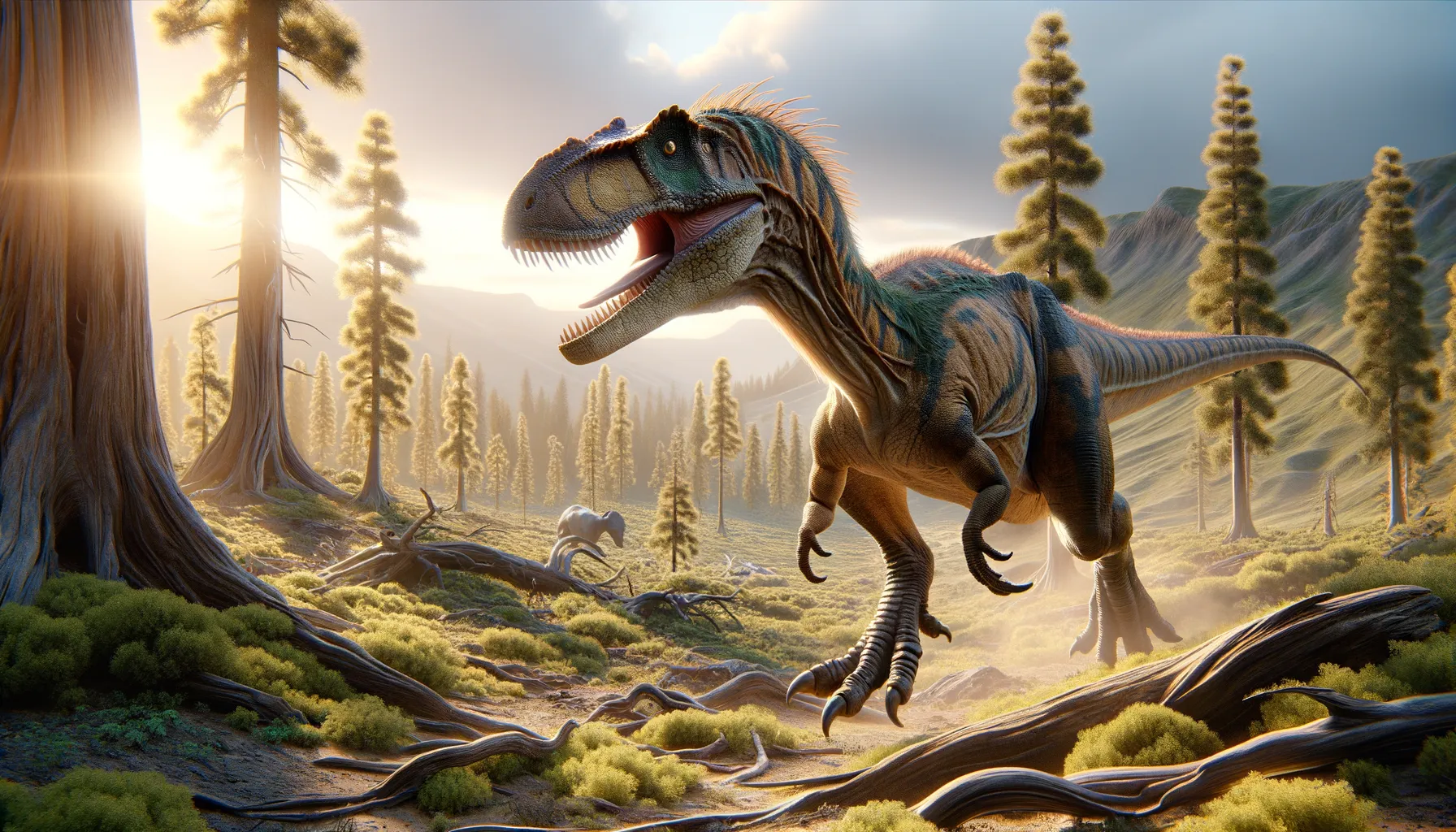
Nedcolbertia
A swift hunter of the early Cretaceous.
Period
Cretaceous
Length
Roughly 3.5 meters long.
Height
About 1.2 meters tall at the hip.
Weight
Approximately 50 to 75 kg.
Nedcolbertia was a nimble predator roaming the early Cretaceous period, known for its moderate size and agility. Its fossils were first unearthed in Utah, revealing a creature that likely preyed upon smaller animals. This dinosaur's speed and stealth made it an adept hunter, thriving in a terrestrial landscape. As a theropod, it shared its habitat with large herbivores, which might have been its primary competition.
Diet
Nedcolbertia was likely a carnivore, hunting smaller dinosaurs and possibly scavenging. Its teeth were adapted for slicing through flesh, indicating a diet that included a variety of small vertebrates.
Hunting
With keen senses and agile limbs, it could chase and capture its prey through bursts of speed. This hunting ability allowed it to sneak close before launching a swift attack on its unsuspecting prey.
Environmental challenges
The Cretaceous period offered a dynamic environment with changing climates and vegetation. Sudden temperature fluctuations may have affected food availability. Competition with other carnivorous dinosaurs posed constant survival challenges while environmental changes occasionally led to resource scarcity.
Speed
Moderate, capable of short bursts of running.
Lifespan
Estimated around 20 to 30 years.
First discovery
Discovered in the Cedar Mountain Formation, Utah.
Fun Facts
- Nedcolbertia is a dinosaur that lived during the Early Cretaceous period, around 130 million years ago.
- It was named in honor of Edwin Colbert, a prominent American paleontologist who made significant contributions to the field.
- Nedcolbertia was a small, bipedal dinosaur, likely reaching about 2 meters in length.
- It was a theropod, which means it walked on two legs and had characteristics similar to modern-day birds.
- Its fossils have been discovered in what is now Utah, providing insight into the dinosaur ecosystems of North America during the Early Cretaceous.
- Nedcolbertia might have been a carnivore, judging by its teeth and other fossil evidence.
- The discovery of Nedcolbertia helps scientists understand more about the diversity of small theropods in ancient ecosystems.
Growth and Development
Growth in Nedcolbertia was rapid during juvenile years, with a gradual tapering off as it matured. Its bones show signs of quick development, suggesting it reached adult size relatively fast to cope with predators. Juveniles likely relied on their parents for protection before maturing into independent hunters.
Habitat
Nedcolbertia inhabited semi-arid regions with scattered woodlands and river valleys. These areas provided ample opportunities for ambush and plenty of smaller animals to prey upon. Seasonal changes affected the vegetation and prey patterns, demanding adaptability.
Interaction with other species
Nedcolbertia likely coexisted with larger herbivorous dinosaurs, which it did not prey on directly but had to avoid due to size disparity. It may have displayed opportunistic behavior, scavenging from kills made by other larger predators. Social behavior was minimal, primarily focusing on solitary hunting and occasional encounters with other members during mating season.
Natural lifespan
Its natural lifespan is estimated to be about 20 to 30 years.
Reproduction
Egg-laying was likely, with nests built in soft ground or hidden among vegetation. Parental care might have involved guarding the nest until hatching, but young likely became independent quickly. Hatchlings were likely precocial, quickly developing the ability to move and hide from predators.
Social behaviour
Generally solitary, engaging with others primarily for mating. Any group behavior was likely based on necessity rather than complex social structures. When threatened, it relied on its speed to escape rather than social cooperation.
Fossil locations
Fossils of Nedcolbertia have primarily been found in the Cedar Mountain Formation in Utah. This region provides critical insights into early Cretaceous ecosystems. Fossil evidence is limited but indicates a broad distribution within its environmental niche.
